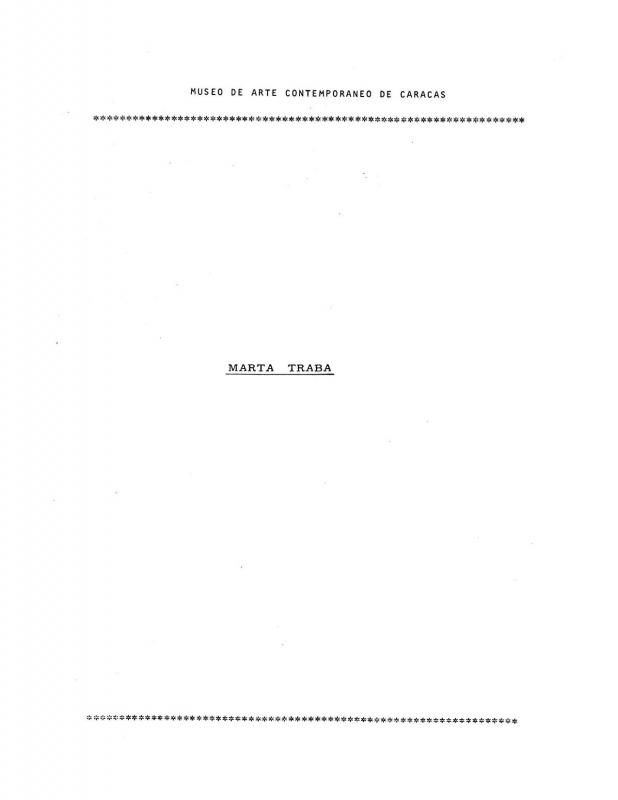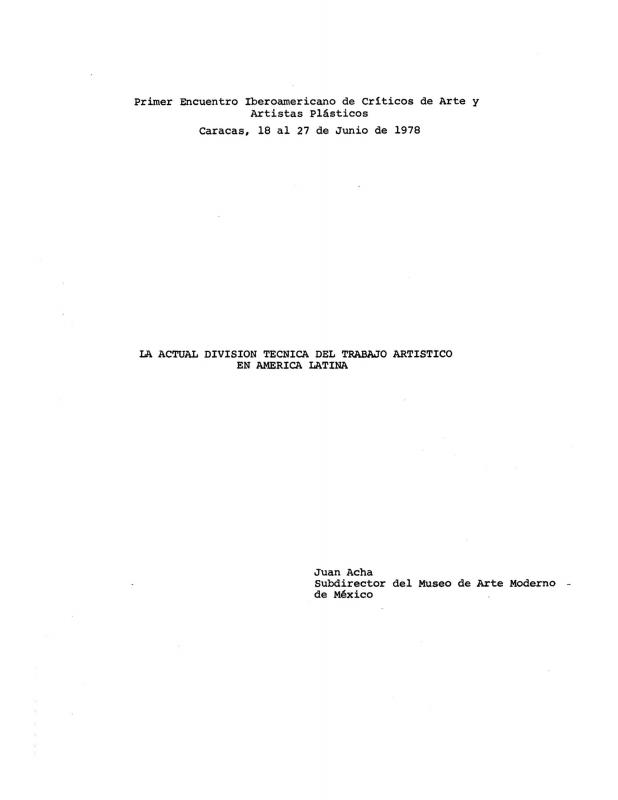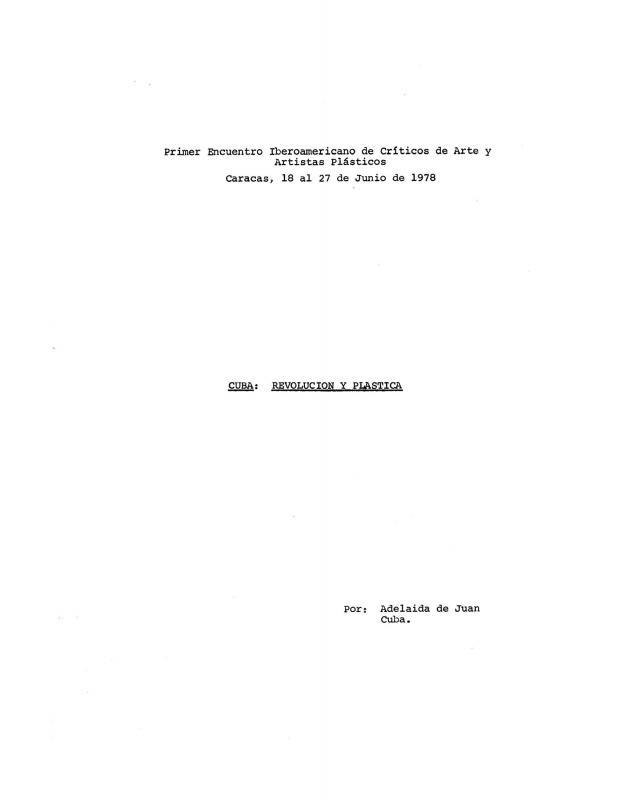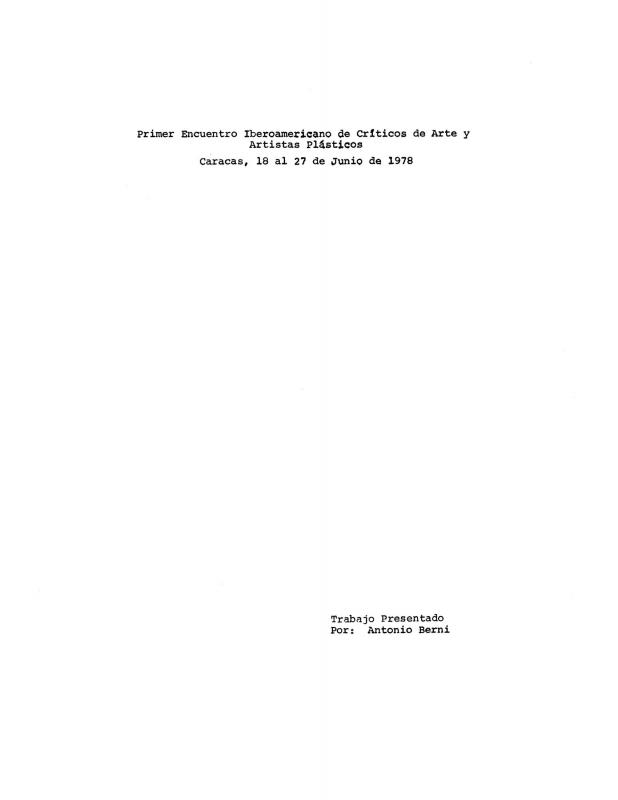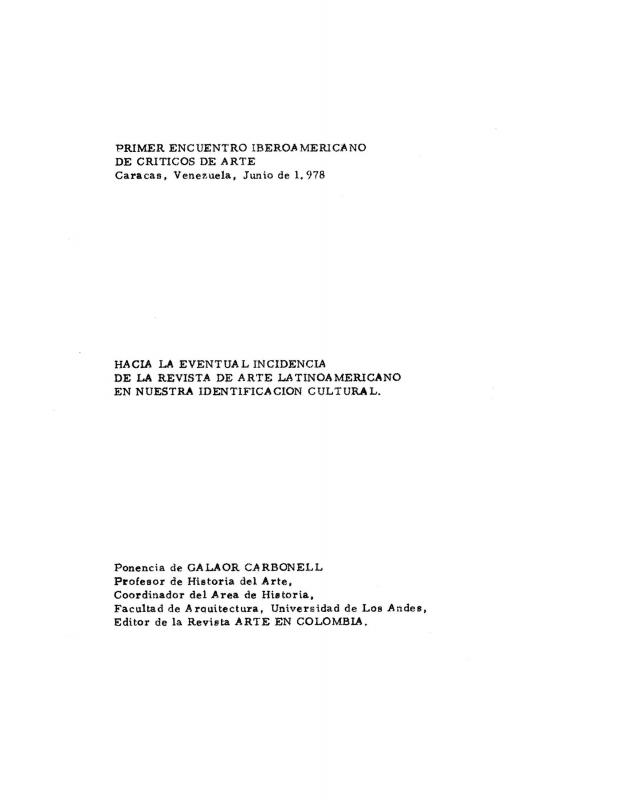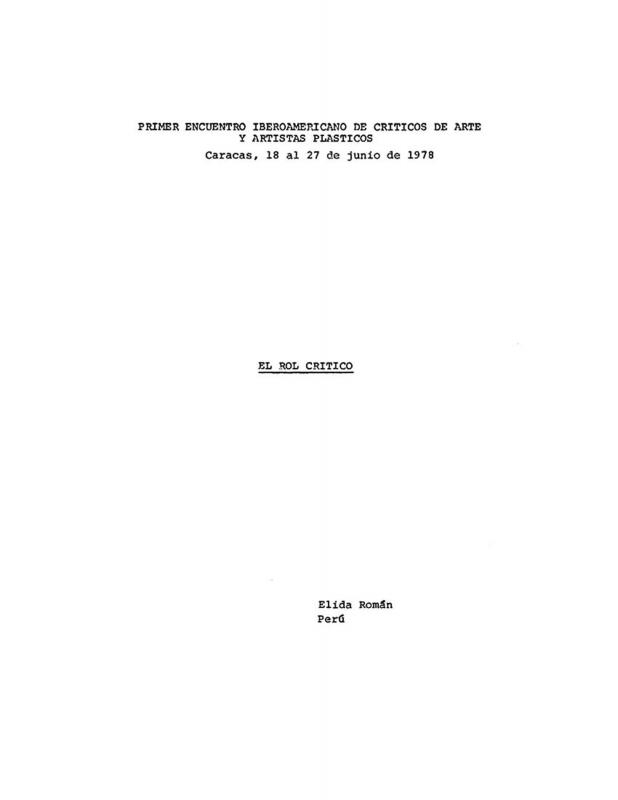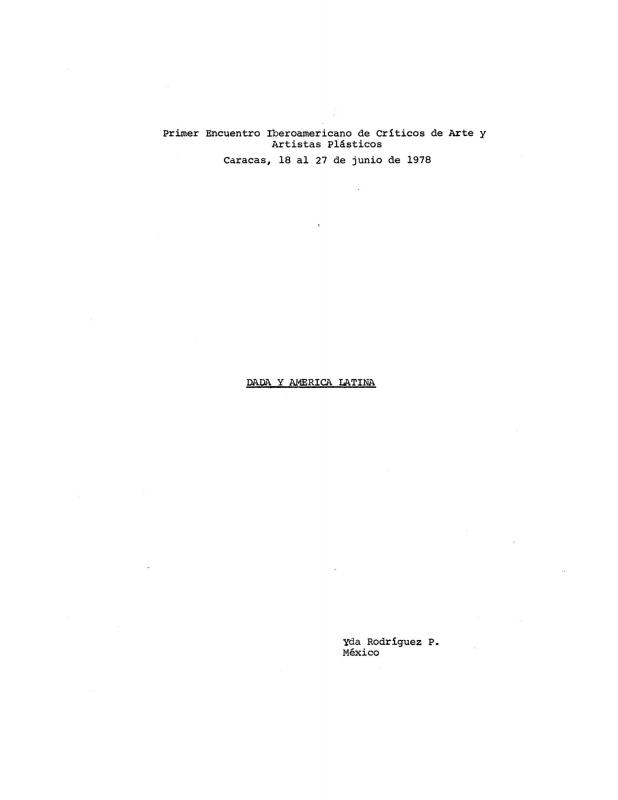The interest in this paper by Venezuelan art critic and journalist Roberto Montero Castro, apart from the historical research he did into the possibility of a “Venezuelan identity” arising from miscegenation, lies in his analysis on the subject of identity in light of the political reality of that moment in Venezuelan life. He points out the importance of the democratic process that had begun in the nation, in 1958, due both to the end of the Marcos Pérez Jiménez (1952–58) military dictatorship and to the value that artists placed on this development. In his paper, one of the most extensive of the Encuentro, one can see the institutional growth experienced in Venezuela during the 1970s, when museums of the first order were established, such as the GAN (Galería de Arte Nacional) and the MACC (Museo de Arte Contemporáneo de Caracas), as well as institutions that enjoyed significance across the continent such as the CELARG (Centro de Estudios Latinoamericanos Rómulo Gallegos).
The Primer Encuentro Iberoamericano de Críticos de Arte y Artistas Plásticos was held in 1978, at the Museo de Bellas Artes de Caracas. In addition to Montero Castro, other important figures in art and art criticism participated, including Jorge Alberto Manrique, Marta Traba (see “La tradición de lo nacional” [doc. no. 815744]), Juan Acha (“La actual división técnica del trabajo artístico en América Latina” [doc. no. 815489]), Julio Le Parc (“Interrogantes” [doc. no. 815575]), Adelaida de Juan Juan (“Cuba: revolución y plástica” [doc. no. 815544]), Carlos Rodríguez Saavedra, Jacqueline Barnitz, Berta Taracena (“Elementos constantes en el arte iberoamericano” [doc. no. 815558]); Antonio Berni (“No puedo dejar de destacar la importancia de este encuentro” [doc. no. 815659]), Galaor Carbonell (“Hacia la eventual incidencia de la revista de arte latinoamericano en nuestra identificación” [doc. no. 815603]), Marco Miliani, Alirio Rodríguez, Jorge Glusberg (“Aproximación metodológica para una comprensión de la retórica del arte latinoamericano” [doc. no. 815475]), Élida Román (“El rol del crítico” [doc. no. 815617]),Ida Rodríguez Prampolini (“Dadá y América Latina” [doc. no. 815758]), Carlos Areán (“Iberoamérica y su identidad artística y cultural” [doc. no. 815730]), Roberto Pontual, and Aracy A. Amaral.
The “Austin Symposium” was an important forerunner to this event. The Symposium was organized by Damián C. Bayón and held at the University of Texas at Austin in late October 1975. Many of the participants at the 1978 Encuentro had attended the Austin Symposium, which provided a common ground for discussion. Bayón later published a book on this event, El artista latinoamericano y su identidad (Caracas: Monte Ávila Editores, Colección Estudios, 1977; 150 pages, illustrated in black and white).
It is important to note that the lectures delivered at the Museo de Bellas Artes in 1978 had not been published at that point, though some were subsequently included in monographs or anthologies. They therefore possess great documentary value as primary source material.

